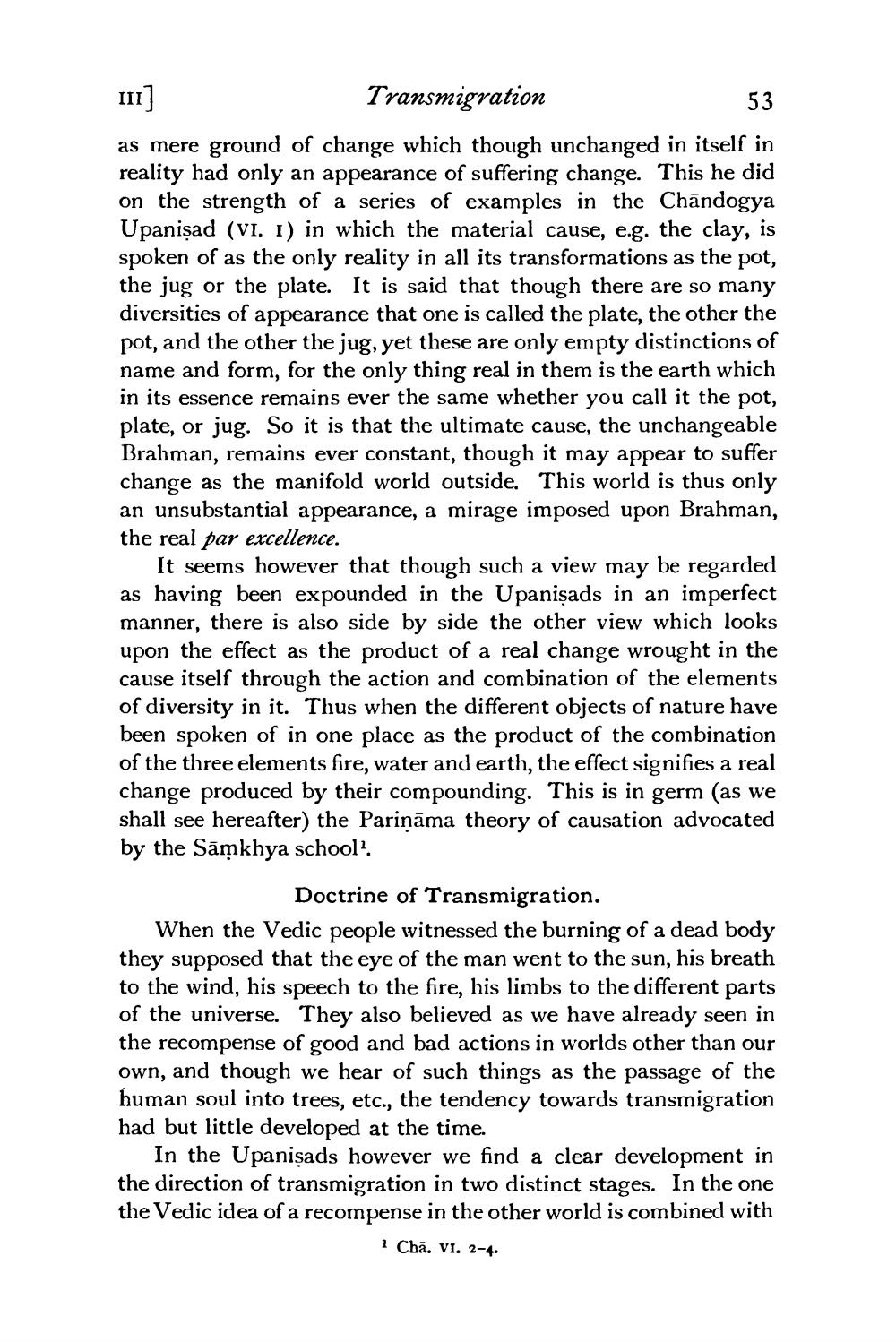________________
53
111]
Transmigration as mere ground of change which though unchanged in itself in reality had only an appearance of suffering change. This he did on the strength of a series of examples in the Chāndogya Upanişad (VI. I) in which the material cause, e.g. the clay, is spoken of as the only reality in all its transformations as the pot, the jug or the plate. It is said that though there are so many diversities of appearance that one is called the plate, the other the pot, and the other the jug, yet these are only empty distinctions of name and form, for the only thing real in them is the earth which in its essence remains ever the same whether you call it the pot, plate, or jug. So it is that the ultimate cause, the unchangeable Brahman, remains ever constant, though it may appear to suffer change as the manifold world outside. This world is thus only an unsubstantial appearance, a mirage imposed upon Brahman, the real par excellence.
It seems however that though such a view may be regarded as having been expounded in the Upanişads in an imperfect manner, there is also side by side the other view which looks upon the effect as the product of a real change wrought in the cause itself through the action and combination of the elements of diversity in it. Thus when the different objects of nature have been spoken of in one place as the product of the combination of the three elements fire, water and earth, the effect signifies a real change produced by their compounding. This is in germ (as we shall see hereafter) the Pariņāma theory of causation advocated by the Sāmkhya school'.
Doctrine of Transmigration. When the Vedic people witnessed the burning of a dead body they supposed that the eye of the man went to the sun, his breath to the wind, his speech to the fire, his limbs to the different parts of the universe. They also believed as we have already seen in the recompense of good and bad actions in worlds other than our own, and though we hear of such things as the passage of the human soul into trees, etc., the tendency towards transmigration had but little developed at the time.
In the Upanişads however we find a clear development in the direction of transmigration in two distinct stages. In the one the Vedic idea of a recompense in the other world is combined with
1 Chã. VI. 2-4.




